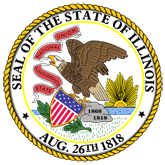SiteTitle | • | Illinois' statewide monitoring well network for pesticides in shallow groundwater: network development and initial sampling results | [X] |
| | 1: | | Title: | | | | | Volume/Number: | 2005 | | | | Issuing Agency: | | | | | Description: | A key element of the Illinois Generic Management Plan for Pesticides in Groundwater was the use of a statewide map of aquifer sensitivity to contamination by pesticide leaching. This map included soil properties (hydraulic conductivity, the amount of organic matter within individual soil layers, and drainage class) from a digital soil association map and hydrogeologic properties to a depth of 50 feet. The map displayed six mapped units or levels of aquifer sensitivity, and each map unit was subdivided into two map subunits. Each subunit had a distinct combination of soil and hydrogeologic properties. Prior to the implementation of the Generic Plan, the statewide map was tested by sampling shallow groundwater for pesticides from a dedicated monitoring well network. To test this mapping strategy efficiently, a stratified random sampling plan was adopted that focused on the three most sensitive map units. Project goals were to provide data to test the utility of the aquifer sensitivity map to predict pesticide occurrence and to understand pesticide occurrence in shallow groundwater. All monitoring wells were located near agricultural production fields (most within 10 feet of corn and soybean fields) where the only known source of pesticides were those pesticides used in normal agricultural production. Most studies of pesticide contamination covering a broad geographic area sample water-supply wells, and this study using monitoring wells was designed to generate data that might provide a unique perspective on the occurrence of pesticides in shallow groundwater. Prior to the completion of the entire monitoring network, a one-time sampling program of monitoring wells was conducted to assess the distribution of pesticide occurrence across the various units of aquifer sensitivity, and a time-series sampling program was conducted to assess the temporal variability of pesticides in shallow groundwater. For the one-time sampling program, 159 samples were collected from 159 wells from September 1998 through February 2001. For the time-series sampling program, 215 samples were collected from 21 wells from October 1997 through July 2000. These groundwater samples were analyzed for 14 pesticides but no pesticide degradates. In addition, groundwater samples were collected to characterize cations and anions, including nitrate-nitrogen. Data from these initial sampling programs showed that pesticides were detected in 16 to 18% of the samples. Atrazine was the most commonly detected pesticide, followed by metolachlor, butylate, and bromacil. Only one sample had a concentration of a pesticide (atrazine) that exceeded a federal drinking water standard. Most detections were at concentrations less than 1 g/L. Pesticide occurrence was generally dependent on sampling time. The strongest temporal relationship was between post-application (June through October) versus other time frames (November through May). Pesticide occurrence during post-application months was three times higher than during other months. Pesticide occurrence was three times more common in samples when the depth to aquifer material was mapped as less than 20 feet than when the depth to aquifer material was mapped as 20 to 50 feet. Thus, pesticide occurrence was found to be dependent on depth to uppermost aquifer material or the hydrogeologic factor of the tested map. Pesticide occurrence was not dependent on the combined soil and hydrogeologic factors of the tested map. Thus, the new map was not a useful predictor of pesticide occurrence. The median and range of anion and cation concentrations for both sampling programs were similar, except for nitrate-nitrogen concentrations. The median nitrate-nitrogen concentrations for both programs differed slightly, but were less than 3.0 mg/L, which is well below the 10 mg/L maximum contaminant level for nitrate-nitrogen. The nitrate and sulfate concentrations were not uniform across the six subunits. Based on the neural network analysis of the one-time sampling data, the time of sample collection and well depth appeared to be the best parameters for predicting pesticide concentration. Depth to uppermost aquifer material and depth to water also were significant. Aquifer sensitivity to contamination and pesticide leaching class values were not able to predict contamination potential independently; however, their presence with other input parameters improved the prediction of contamination by the neural network analysis. | | | | Date Created: | 1 24 2006 | | | | Agency ID: | COOP-20 | | | | ISL ID: | 000000000959 Original UID: 999999994473 FIRST WORD: Illinois' | |
|
